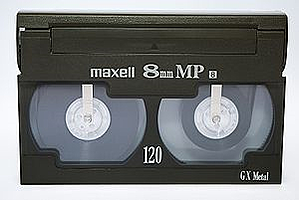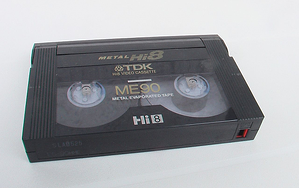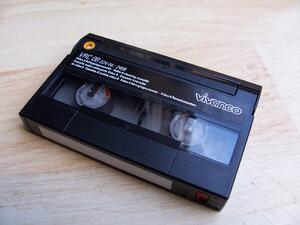It is probably safe to say you have home movies tucked away in storage from your childhood or your parent’s childhood. The voice of your grandmother, the laughter of your daughter on her first birthday, your son’s clarinet solo from grade school - these are all memories we can imagine you have a version of captured.
There’s no question that converting these videos to DVD would allow for an easier way to share and enjoy your memories. But what kind of home videos might you have? Are they VHS, Betamax or 8mm? What are key indicators for the kind of video you have in your archives? With these questions in mind, we’ll get you started on understanding 8mm video.
8mm video is the blanket term for three Sony videocassette formats:
-
Video8
-
Digital8
-
Hi8
These three formats were popular throughout the 80’s and 90’s. Mostly amateur video makers used 8mm video, though some professionals did regard them as highly useful in the professional television production field. All three formats share similar characteristics such as the cassette shells and magnetic videotape. The only real difference is the quality of the tape.
Video8
 Video8 was very popular as a consumer solution in the camcorder market. It was released in the 1980’s. This can be regarded as a successor to the 12mm Betamax format. The one major advantage Video8 held over other camcorder options was that they could be handheld as opposed to VHS and Betamax camcorders, which required the assistance of a tripod or a strong upper body.
Video8 was very popular as a consumer solution in the camcorder market. It was released in the 1980’s. This can be regarded as a successor to the 12mm Betamax format. The one major advantage Video8 held over other camcorder options was that they could be handheld as opposed to VHS and Betamax camcorders, which required the assistance of a tripod or a strong upper body.
Hi8
 Hi8 was Sony’s answer in the 1980’s to the Super VHS format. Sony battled by making Hi8’s picture quality improved with some of the same technology as S-VHS.
Hi8 was Sony’s answer in the 1980’s to the Super VHS format. Sony battled by making Hi8’s picture quality improved with some of the same technology as S-VHS.
Digital8
 Digital8 was introduced in 1999. Digital8 is almost identical to MiniDV when compared technically. It served as a low cost upgrade from its analog predecessor, Video8.
Digital8 was introduced in 1999. Digital8 is almost identical to MiniDV when compared technically. It served as a low cost upgrade from its analog predecessor, Video8.
Looking for more information on how to identify your archives? You’re in luck! We have an ebook dedicated to just this >>
Photo Credit: commons.wikipedia.org




